The 8 Book STEM Collection
€99.00
This is the collection of 8 superb activity driven books to get the senior primary school students productively engaged in immersive STEM projects.
Over 1,000 pages of top quality activities to drive a STEM educational approach to swathes of the primary curriculum.
Description
This is the collection of superb activity driven books to get the senior primary school students productively engaged in immersive STEM projects.
Over 1,000 pages of top quality activities to drive a STEM educational approach to swathes of curriculum.
The 8 books comprise:
1.How To Be An Engineer by Carol Vorderman / 144 Pages
Shortlisted for the Primary Teacher Update Award 2018, children learn as you do in this hands-on engineering book for kids with Carol Vorderman.
Discover the skills it takes to be an engineer!
Being an engineer is about looking at the world and trying to figure out how things work. This book, ‘How to be an Engineer, will help your students investigate engineering ideas such as jet engines, tunnels, skyscrapers, bridges, robots and countless other ideas. Engineering activities are spread across 5 themes: Amazing Materials, Strong Structures, Mighty Machines, Getting Around, Incredible Energy.
This book encourages you to investigate; with amazing projects using things from around your home: find out about materials by crushing loo rolls; learn about jet propulsion with balloons; and build a robot arm from rulers. Fun questions; engineering experiments; and real-life scenarios come together to make engineering relevant. In How to be a Engineer, the emphasis is on inspiring students; which means less time at a computer and more time in the real world! Do you like solving problems? Are you good at making things? Have you ever dreamed of being an inventor? If so, you may be an engineer in the making!
2. How to Be a Scientist by Steve Mould / 144 Pages
Discover the skills it takes to become a scientist in DK’s new science book for kids with science presenter and comedian Steve Mould.
Being a scientist isn’t just about wearing a lab coat and performing science experiments in test tubes. It’s about looking at the world and trying to figure out how it works.
As well as simple science experiments for kids to try; How to Be a Scientist will teach them how to think like a scientist and ask questions including: why doesn’t pineapple jelly set; how do you grow your own crystals; and how does a black and white image turn to colour?
The wealth of hands-on-making activities are spread across 6 themes: Natural World, Human Body, Chemistry, Earth, Physics, Space.
For every scientific concept the child learns they will be encouraged to find new ways to test it further.
Fun questions, science games and real-life scenarios make science relevant to children.
In’ How to be a Scientist’ the emphasis is on inspiring kids to do fun activities and see what happens, to ask questions and to figure it out, to discover amazing facts by taking things apart!
3. Computer Coding Games for Kids Using Scratch by Carol Vorderman / 244 Pages
If your students like playing computer games, why not have them make their own?
This book has all you need to get them building thrilling racing games, crazy platform games, and fiendish puzzles.
Follow the simple steps to become an expert coder using the popular programming language Scratch. Get coding and build your own computer games with this simple visual guide using SCRATCH, which makes coding for kids a doddle. Just follow the numbered steps to build eight crazy games with the Scratch programming language.
Improve their coding skills and help them learn to create, remix, and customise their own games.Create single and multiplayer games, platformers, mazes, brainteasers, races, and more. All you need is a desktop or laptop computer and an internet connection to download Scratch. Essential coding and computer science concepts are explained along the way as you build, test, and customise each game.
As well as teaching beginners how to code in Scratch, the book supports STEM education goals by showing readers how to plan and design projects, test and improve prototypes, reason logically, communicate ideas, and think creatively – all while creating games to play with friends and classmates.
DK’s computer coding books are full of fun exercises with expert guidance, making them the perfect introductory tools for building vital skills in computer programming in the classroom.
Have them share their games online and challenge friends and classmates to beat each other’s scores.
4. Computer Coding Projects for Kids Using Scratch by Carol Vorderman / 244 Pages
Coding for kids is easy with this colourful illustrated guide by best-selling education author Carol Vorderman.
Based on the programming language Scratch, the book is divided into a range of creative projects – from interactive birthday cards to music and games – and each one is illustrated with simple, step-by-step instructions that walk beginners through the basics of computer coding.
Activities such as creating a virtual firework display, simulated snowflakes, fractal art and mind-bending optical illusions not only teach essential coding skills, but enable kids to have fun as they learn.
Projects can be personalised and adapted to encourage creativity, and can even be shared with friends, providing a simple and fun way for kids to learn coding.
5. Science Scribble Book / A4 / 80 Pages
Think like a scientist in this innovative activity book, full of science activities to explore, record, discover and invent. Investigate forces, turbines, mirror writing, skeletons, animal migration and lots more, all using only the book and your pencil case. Includes links to websites with even more science activities and downloadable templates.
6. Engineering Scribble Book / A4 / 80 Pages
Discover how engineers solve problems in this innovative activity book, filled with inventions to brainstorm, puzzles to solve and objects to design. Create an earthquake detector, design a moon base and lots more, all using only the book and your pencil case. Includes downloadable templates and links to websites with more engineering experiments.
7. Technology Scribble Book / A4 / 80 Pages
Discover high-tech gadgets, design robots and machines, and solve all sorts of technological puzzles in this innovative activity book filled with inventions to brainstorm, puzzles to solve and objects to design. Includes downloadable templates and links to inspiring websites about technology today.
8. Maths Scribble Book / A4 / 80 Pages
Think like a mathematician by scribbling your way through this jam-packed activity book, full of maths puzzles to solve, codes to crack and patterns to draw. Activities include inventing your own currency, designing symmetrical shapes and creating maths magic tricks. Includes links to websites with even more maths facts and activities.
This collection will both inform and energise teachers in the key area of how to deliver a STEM filled approach to swathes of curriculum and enliven the students with the quality and depth of the activities.

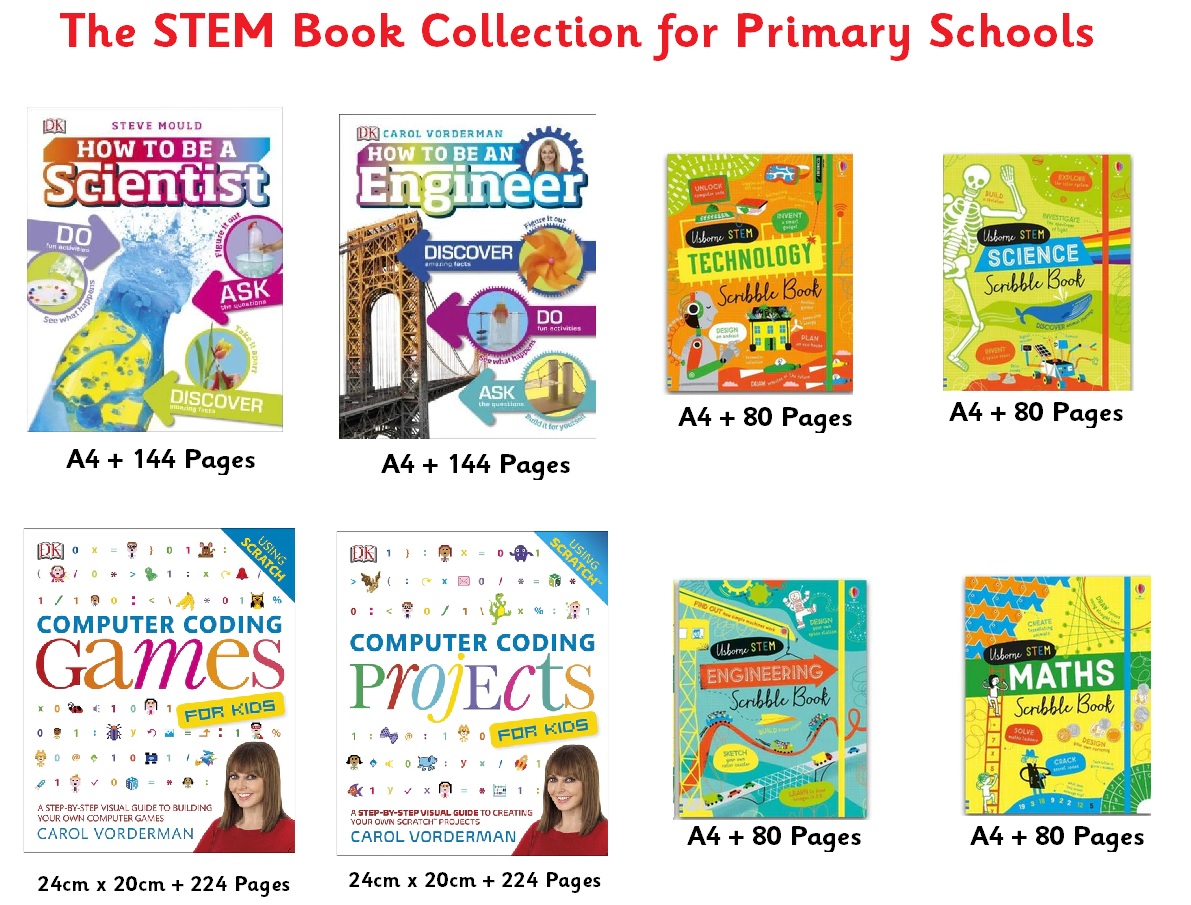
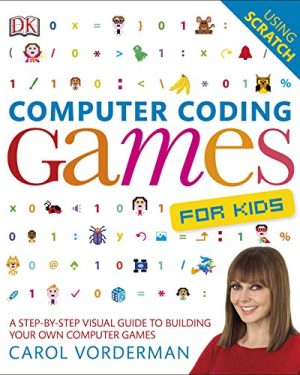
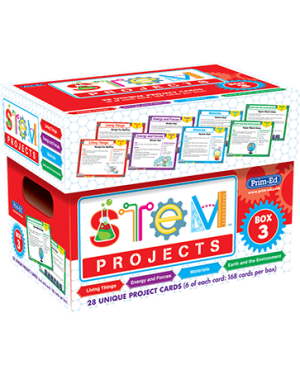
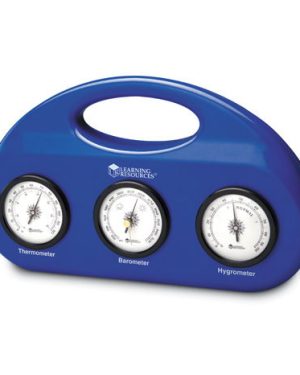
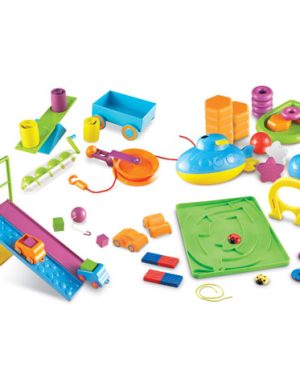

Reviews
There are no reviews yet.